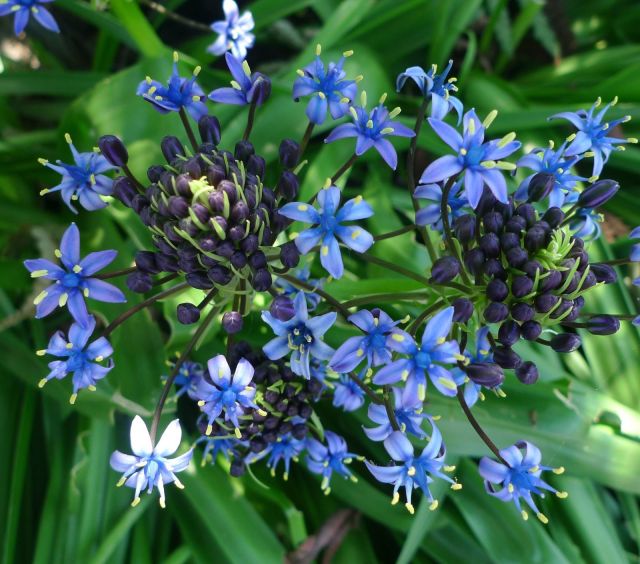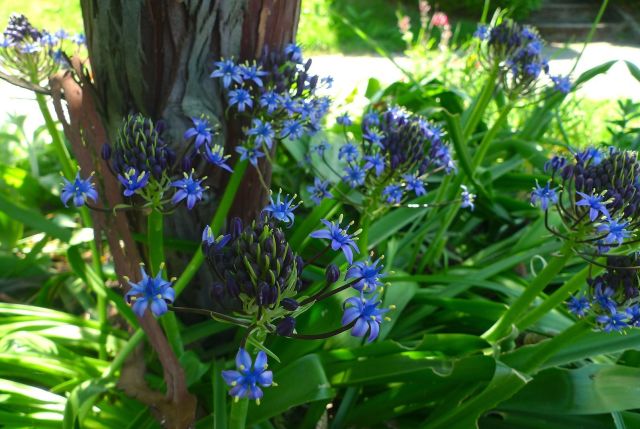Parking Strip-Perfect: Scilla Peruviana

Scilla peruviana
Image: Kate Bryant
Drought-tolerant plants are more and more important in Pacific Northwest gardens. Our climate is warming and natural resources like water are becoming increasingly precious. It's time to start planting trees – and gardens - with an eye towards the future.
Drought-tolerant gardens can make an aesthetic as well as a political statement. There's a trick to creating a garden that is climate-adapted but still lush with flowers and foliage. When it works, it's dazzling, with hallmark bright spring color, resinous-scented summer foliage and refreshed fall growth as the autumn rains arrive. Many drought-tolerant plants are evergreen, too, producing flowers or fresh new growth at the end of the wet season: drought-tolerant gardens can really shine in winter.
To create such an evocative, climate-appropriate garden, include drought-tolerant plants from a variety of categories: trees, shrubs, vines, perennials, annuals and bulbs.
Scilla peruviana is one example of such a perfect climate-adapted bulb for a dry garden in our region. Growing from a fleshy white bulb, Scilla peruviana offers gorgeous, deep indigo blue buds opening to fireworks-like sprays of starry, cobalt blue florets with long, yellow anthers in mid-May. The flowers reach about 8-12" in height and the plant forms a hefty clump over time that works well beneath trees (half-shade is fine) or full sun, alongside perennials or beneath limbed-up shrubs.
When open, the flowers are cobalt blue, like our native camass (read more about our local camass preserves here). But unlike camass, which is found in damp meadows, Scilla peruviana thrives in baking hot, unirrigated spots like parking strips and dry gardens. They grow in winter and spring, so they don't do so well under conifers with long, sweeping branches and roots that suck up all the winter moisture. Instead, plant them in well-drained soil that still receives winter moisture.

Scilla peruviana
Image: Kate Bryant
The foliage is a bit floppy, appearing in winter and persisting through the flowering period until about July, when it dries up and withers away. It’s therefore great for suppressing those pesky winter-growing weeds like bitter cress, chickweed and oxalis.
Notwithstanding the species name, Scilla peruviana is actually native to Spain, Portugal and southern Italy – not Peru. Since it requires absolutely no water in summer, it should be paired with other drought-tolerant plants. In my parking strip, it grows beneath a Catalina ironwood (Lyonothamnus floribundus ssp. aspleniifolius) alongside Warren Roberts Manzanita (Arctostaphylos pajaroensis ‘Warren Roberts’), Salvia greggii, Stachys byzantium ‘Primrose Heron’, and Teucrium marum.
Drought-tolerant Scilla peruviana makes an invaluable contribution to the parking strip – a part of the yard that most people find hard to keep looking good year-round. Buy it in flower, in pots, in May, or buy the bulbs in early fall, while they are dormant.
